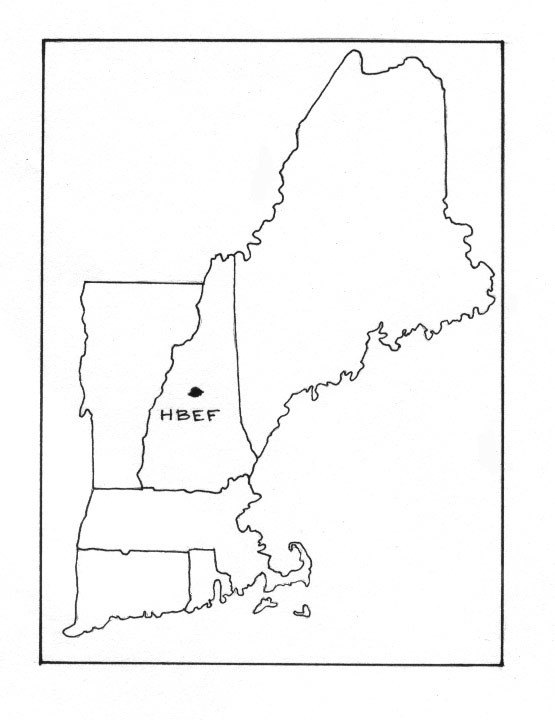
We in northern New England continue to contend with acid rain. A report released by the Environmental Protection Agency earlier this year stated that, despite a decrease in the acidity of incoming rain, much of New England has not seen a corresponding improvement in its surface waters because decades of acid rain have removed many of the soil elements that naturally neutralize acidity. Since these elements, primarily calcium but also magnesium and potassium, are also important for tree growth, ecosystem scientists in the Northeast have become very interested in what is happening to our forests when these important nutrients are removed.
Soils in our region tend to be naturally acidic to begin with, which makes them especially vulnerable to the additional acidity from acid rain. When acid rain moves through the soil, positively charged hydrogen ions in the rainwater (acidity is a measure of hydrogen ions) switch places with positively charged ions — mostly calcium — that are loosely held in the soil. The water draining from the soil is thus less acidic than the rainfall, since it lost hydrogen ions to the soil, but the soil is left with a reduced ability to continue this process in the future since it has lost calcium.
Calcium is a vital nutrient for tree health, and calcium deficiency has been tied to sugar maple decline and winter injury in red spruce. It’s also important in other ways: birds need calcium for eggshells; plants need it for a variety of things, including cell walls; and soil pH, largely controlled by calcium, influences the availability of other nutrients to plants.
Clearly, acid rain has the potential to affect our forests in significant ways, but in what ways? An ambitious, 50-year experiment at the Hubbard Brook Experimental Forest (HBEF), in Woodstock, New Hampshire, aims to answer this question.
The HBEF is a 7,800-acre study area within the White Mountain National Forest with 10 small, forested watersheds in which the cycling of water and nutrients has been measured intensively for the past 40 years. This makes the HBEF a perfect study site for two reasons. First, there is a precise record of the chemical constituents of the rain and streamwater for much of the acid rain era. This record, in fact, led to the discovery of acid rain in the late 1960s and now has enabled scientists to measure just how much calcium has been lost from the forest since the study began. Second, the presence of a group of similar watersheds within the HBEF enables scientists to manipulate one whole watershed and compare its behavior with a second “control” watershed nearby.
This is just what the scientists at the HBEF have been doing — they’ve replaced the amount of calcium lost to acid rain in an entire 29-acre watershed and now are comparing what happens to all of the components of the watershed (plants, animals, microbes, fungi, soils, and streams) with an adjacent, untreated watershed. By watching how the calcium gets incorporated into the forest and how the forest then begins to differ from that in the untreated watershed, scientists hope to quantify the role calcium plays in both the structure (what and how much is there) and function (how elements flow through) of northeastern forests.
In the fall of 1999, the calcium study at Hubbard Brook began when 45 tons of a calcium-rich mineral called wollastonite were spread by helicopter evenly over the 29-acre watershed. This amount was calculated to equal the calcium lost to acid rain. The calcium is expected to take seven years to be fully absorbed into the environment, and the study itself is envisioned to last 50 years, so very few results are yet available. Some preliminary observations, however, are worth noting.
Levels of available calcium in the organic layer of the soil are significantly higher than they were before the application. Calcium levels in some plants, like wood fern, shot up the year after application. Higher levels of calcium are also showing up in some tree species even though the trees did not respond immediately. This year, sugar maple seedlings were measurably more green in the calcium-treated watershed. Perhaps most tantalizing was the observation that, in the higher elevations, where red spruce grows, the spruce appeared to experience less winter injury than in the nearby control watershed.
It will be years before scientists have a good grasp on how the forest responds to the removal of this acid rain stress, but the process should lead to a better understanding of the relationship between soils and the properties of the forests they support. The old saying about planting apple trees applies equally well to long-term scientific studies: the best time to get started was 50 years ago. But the second-best time is now.

